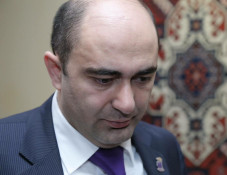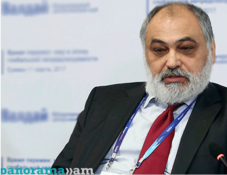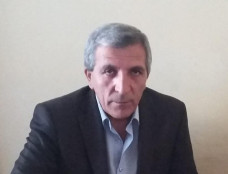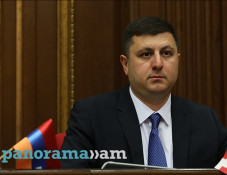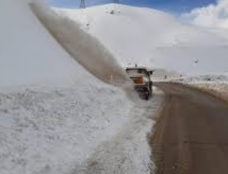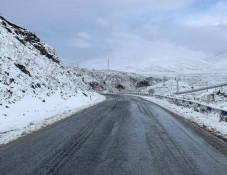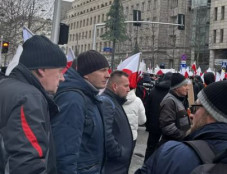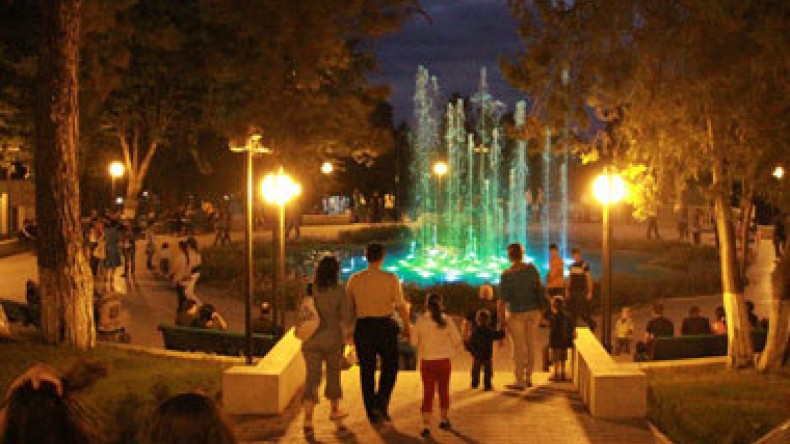
Argentinian outlet: Azerbaijan holds refugees in tent camps, while Armenian refugees from Baku have long been integrated
The Argentinian outlet PERFIL visited Armenia and Nagorno Karabakh at the invitation of the Argentinian branch of the Armenian Genocide Centennial Committee. The author of the article, Santiago Farrell, shares his impressions in his article titled “Nagorno Karabakh, the First Crack of the Soviet Union.”
The author writes that by the end of the 80s, under the ruling of USSR president Mikhail Gorbachev, a number of ethnic, territorial and other conflicts, that had been pressed by the Soviet regime for 70 years, came to light. The first place where the conflict broke out was Nagorno Karabakh, a remote enclave in Azerbaijan. Annexed to Azerbaijan in 1921 “at a stroke of the pen” by Moscow, Nagorno Karabakh (Artsakh for the Armenians) had predominantly Armenian population and a very important symbolic meaning: the ancient monasteries of the nation - the first to adopt Christianity in 301 – are located there. “Nagorno Karabakh for the Armenians is like Jerusalem for the Jews or Mecca for the Muslims,” Bako Sahakyan, the President of the republic, said.
The author states that, according to the Armenian sources, the territory was granted to Azerbaijan because Lenin and Stalin wanted to expand the revolution into Turkey, the successor of the Ottoman Empire, and the Azerbaijanis are a Turkic nation.
“This was indeed the first conflict to break out in the course of the Perestroika and Glasnost despite the appeals of the Armenian population about their wish to join to the Republic of Armenia. The Supreme Council of the USSR dealt with the issue on various occasions,” Argentinian political scientist Mario Nalpatian said.
The author highlights that the conflict is understood better when viewed in the context of Armenian-Turkish standoff over the Armenian Genocide that took place 100 years ago. The war between Armenia and Azerbaijan broke out in 1991 and continued until 1994 leaving at least 30,000 deaths behind, according to the data of various sources. The war did not end with a peace treaty. There is only a ceasefire which is regularly violated causing the death of up to 30 people a year, according to the Minister of Defense of Karabakh, Movses Hakobyan.
Hakobyan, the Minister of Defense, also stressed that the republic relies upon its army where the young men serve for two years. President Bako Sahakyan added that since 1994 Nagorno Karabakh has focused on building a democratic state and it has already held several elections. He also added that the economy of the country has been growing at 10% rate yearly over the last 10 years.
Along with establishing peace, the complicated problem of the refugees is still pending, as the article has it. President Sahakyan regrets that Azerbaijan still holds its refugees in tent camps, while Armenian refugees who were deported from Baku have long been integrated in Karabakh.
Another matter of concern for Karabakh and Armenia is the arms sales by Russia to Azerbaijan over the recent years.
“The Genocide will never repeat. Armenia has its own army, and we have our army here in Nagorno Karabakh,” the Minister of Defense, Movses Hakobyan, dressed in military uniform, said adding that the Armenians will no longer fall victim to pogroms and massacres which they have suffered throughout centuries with the most severe one taking place in the Ottoman Empire in 1915.
“It opened a wound that has not been healed yet,” the author writes and cites the President of Armenia, Serzh Sargsyan, who stressed that the Armenian Genocide is still on and it will continue until Turkey acknowledges its responsibility for that.
Farrell writes that the Centennial of the Genocide of at least 1.5 million Armenians (one third of the total Armenian population living in the Ottoman Empire) will be observed with large-scale events. The main ceremony, in which the Russian President Vladmir Putin and the French President François Hollande will participate among the others, will take place on 24 April, the day of the arrest of prominent Armenian intellectuals, which was followed by a forced deportation and killings of Armenians till 1923.
The author cites the President of Armenia, Serzh Sargsyan, who said that the denial of the Armenian Genocide remains an unresolved problem and is a dangerous precedent which was followed by the Holocaust, the genocide in Rwanda and Cambodia. Presidential Chief of Staff Vigen Sargsyan reminded of Hitler’s notorious phrase, who, invading Poland in 1939, ordered his officials to be as cruel as possible towards the civilians, even women and children, and declared, “Who, after all, speaks today of the annihilation of the Armenians?”
Farrell also writes about the famous Armenian-Argentinian businessman, Eduardo Eurnekian, who donated new computers equipment to the schools in Nagorno Karabakh. Eurnekian is also known for his financial support of Nagorno Karabakh.
A few days after this article was published, the response article of Mammad Ahmedzade, the Ambassador of Azerbaijan to Argentina, was published on the website of the outlet PERFIL. He declared that journalist Santiago Farrell’s visit to Nagorno Karabakh was illegal as he was supposed to agree upon it with Azerbaijan. He added that the Argentinian journalist faced getting into “the black list” of the Foreign Ministry of Azerbaijan.
Related:
Argentinian media: Immersed in cozy landscape around Gandzasar it is hard to believe that contact line is within hour’s drive
TV channel BBC tells about Armenians’ lives in NKR under Azerbaijan’s permanent threats
The New York Times: Nagorno Karabakh is beautiful to look at, miserable to conduct war in
Newsfeed
Videos








